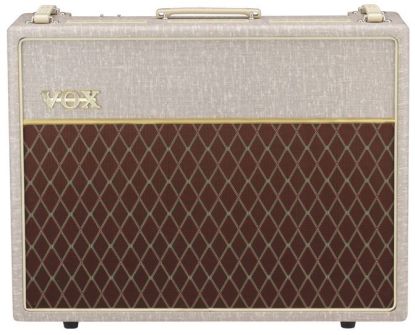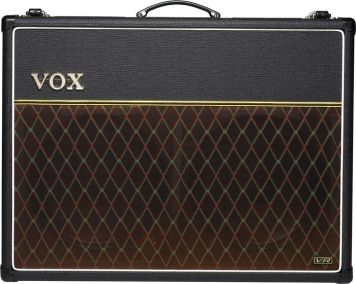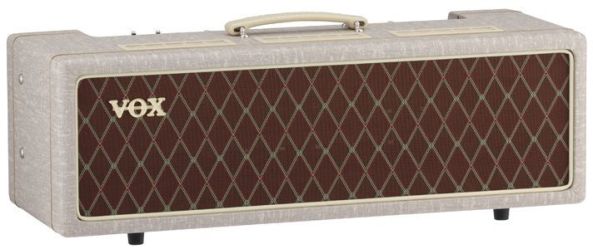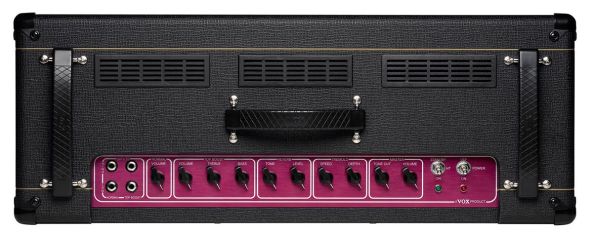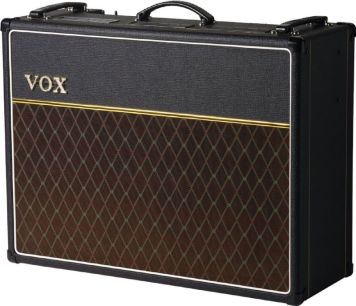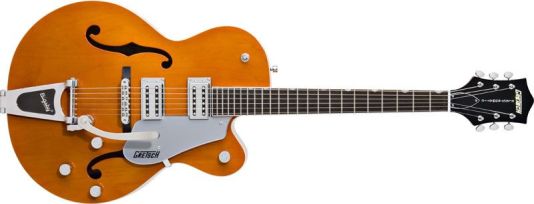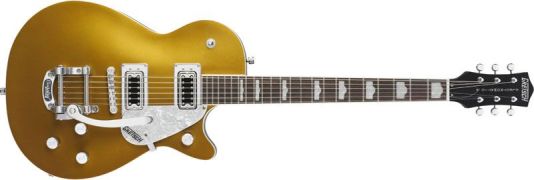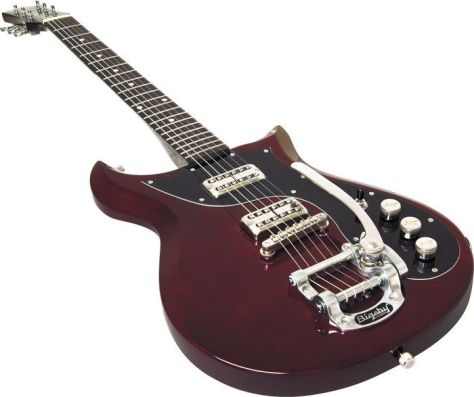Hey guys, Brian from World Music Supply here again to bring you your usual dose of gear and guitar reviews, and today I got the chance to review a very special amplifier, the VOX AC30. Now once in a while, I will take a break from my regular duties of reviewing two or three guitars, amps, or pedals, and sit down with something I think is very influential, and just work out and explain why it is so important. I’ve done a review like this for the Line 6 Variax, the Fender Deluxe Reverb, and the Nuno Bettnecourt N4, but today I get to review something that virtually shaped an entire generation worth of music.
The Amplifier has a very particular sound, with a distinctive top end jangle, and a simplistic, and straight forward design. The sound of the amplifier is heavily influenced by its lack of negative feedback, which is an amplification technique used by most major manufacturers to help with gain stability, frequency response and reduced distortion. This lack of negative feedback causes the upper harmonics of the notes to jump out, creating an otherworldly distorted tone that has characterized the sounds of dozens of guitarists throughout history. The sound is also modified by its inclusion of a rectifier, which is often a buzz word for “metal” amplifiers, but what a rectifier does in effect is take all of the “valleys” of the sound wave and pulls them up into “peaks” resulting in a brighter, cleaner, more sine wave like sound.
Enough tech mumbo jumbo though, what this all translates to is a sound that was, and still is miles apart from its competitors, as the AC30 and the whole family of VOX amps for that matter, sound nothing like their Fender and Marshall contemporaries. Playing a Fender Strat on the cleanest of clean settings, this amp had two things going for it, one was it was amazingly loud for only being 30 watts, this is thanks to the two unique characteristics mentioned earlier, the AC30’s lack of negative feedback, and its rectifier help keep the volume high and pristine even on cleaner settings. The clean tones were very cool too, with lots of clarity and note definition, with lots of high end jangle and twang, and mid range bite and growl. Now while every variant of the AC30 that has come out over the years have different specs, and additions to them, most of them still have about the same sound, so these sentiments should ring true for every model in the line.
I remember about the time I was turning 17 or 18, I saw a documentary on the VOX company, and in particular the AC30. I remember hearing all of the different sound bites of the different bands and being marveled at how broad a scope they were, from classic rock, to country, to blues, to alternative rock. They all had this one amp, and none of them sounded the same. I remember hearing a worker at the factory talk about how the Rolling Stones didn’t know if the AC30 would be road worthy enough to tour with, and someone at the factory actually took one of the amps, and threw it down two or three flights of stairs. They then plugged it in, and it played just fine. I was amazed that a company would put that much trust in their product. So now that I had some spare time on my hands to take an in depth look at one specific product, I wanted to make it count, I wanted to hear what made this amp so timeless and sought after.
Turning the volume up, and letting the amp creep into natural overdrive, it becomes very clear why the likes of Brian May of Queen, The Edge of U2, and Thom Yorke of Radiohead all love this amp so very much. The sound is big and powerful, but with a different sort of tonality and harmonic response than what many guitarists would be used to, as the dynamics of this amp are very touch sensitive, and as well the controls to the amp itself are very precise, as their ranges are very wide. Turning the bass knob from side to side, doesn’t just suck away some bass or add on a little bit, it can delete the bass entirely, or emit enough low end to shake the foundation of most houses. This is unusual for a guitar amp, and you will find that many guitarists will actually tape down, or glue the knobs in place on their AC30, or if your Brian May, you might even just eliminate all of the knobs except the volume, and have the controls set one way forever. It should be noted that Brian May no longer does this to his amps, but the point still holds, that this amp has a very broad scope of sound.
Playing lead lines with the amp cranked you begin to notice something peculiar, as the note sustains, and the fundamental frequency falls away, a tone that is either a perfect fifth, or an octave above the tone begins to pull itself to the surface. This almost octave like effect is almost certainly thanks to the unique wiring of this amp, but all I know is that it is awesome! It took me some fiddling around with the controls to really dial in specific sounds of specific artists that I liked, but once you get the sound set, you really do notice the unique and unusual properties of this amplifier. You can dial in Revolver era Beatles grind, Jangly echo laden U2 tones, and when I used a EQ pedal to act like a treble booster, I was even able to dial in a very convincing Brian May style sound.
The VOX AC30 has a sound that is unique, and timeless. This is the amp that drove The Beatles, The Rolling Stones, Queen, U2, and millions more, to international stardom. This one amp has been the voice of many a guitarist, a symbol of technical ingenuity, and a timeless reminder of classic rock history. For all of these reasons, and surely many more, the VOX AC30 lands itself a solid 10 out of 10.

